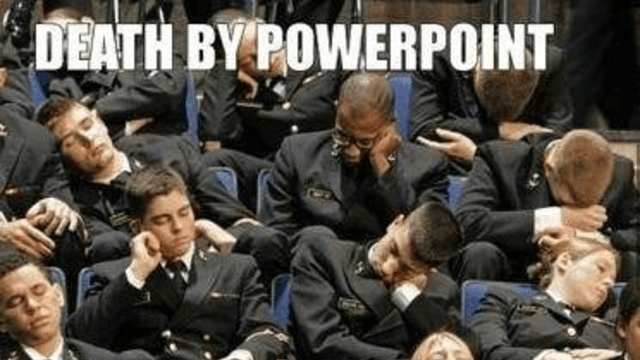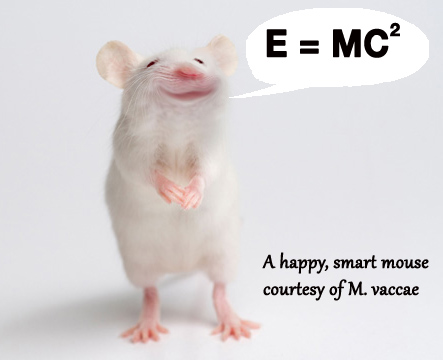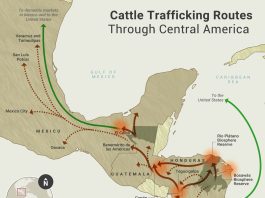It’s the new year, a time of reflecting on the past, thinking about the future, and, sigh, word slides — sooo many word slides.
I see your heavy eyelids, blank looks, frequent trips to the bathroom and intensive texting with others. Yes ladies and gentleman, it’s officially conference season with countless presenters cramming as much text and bullet points on the screen as possible while happily reading it back to an unimpressed audience. Uggh!

Stand-up comedian Don McMillan calls this “death by PowerPoint.” It’s what happens when the audience is emotionally disconnected from the content that is being presented and is left with nothing but a nap. The speaker relies too much on the technology to tell his or her story instead of using it as a visual aid to enhance a presentation. I’ve seen it as a crutch to put something together in a pinch, a substitute for not having to really speak, or because that’s what everybody does nowadays.

Do we owe our audiences something better? “Yes!” emphasized, Executive Speaker and Presentation Skills Coach, Fia Fasbinder. “Humans are visual creatures. MIT Neuroscientists have found that the brain can recognize images seen for as little as 13 milliseconds. In fact, web pages with images draw 94 percent more views than text-only sites. That’s why TED Talk speakers use visuals to win over an audience. By 2018, eighty-four percent of communications are expected to be visual.”
Fasbinder suggests, adding high impact visuals, because “studies have shown that people are more likely to remember information if it is linked to an emotional response. A few well-placed, poignant, personal photos will cement information in your audience’s brain by appealing to their feelings. Preserve your message and give it life by limiting each slide to six words. Get in the habit of editing words and adding images for a powerful presentation. Besides, you want your audience listening to YOU–not reading. And science has shown us people aren’t good at multitasking. Don’t distract them from what’s important: your verbal words.”

Need Help Getting Started?
I will again tout Toastmaster’s International clubs as an invaluable local resource in conquering the fear and art of public speaking. Presenting well, or better, hinges on knowing your audience, learning tried and true techniques and practicing—-lots of practicing.
 But where do I get real-life practice? At a local club where you deliver words without technology crutches to a congenial audience of peers. This atmosphere helps boost your confidence and you get positive feedback on how to improve, which includes adding zing to a PowerPoint presentation.
But where do I get real-life practice? At a local club where you deliver words without technology crutches to a congenial audience of peers. This atmosphere helps boost your confidence and you get positive feedback on how to improve, which includes adding zing to a PowerPoint presentation.
As a former rural Toastmasters President, I’m still learning to deliver a dynamic talk. It’s a life-long practice. I keep trying to refine the use of all the awesome technology we have available while still being authentic. I now look for opportunities to not use “PP”; in favor of customizing physical props, encouraging group participation and other non-podium activities, all so I can bring my topic to life for my audience. And it helps, because, though I hate to be a downer, sometimes you have to be prepared for when the darn computer doesn’t work!
Know Your Audience
The number one lesson I’ve learned over many years of speaking is to get to know the guests’ expectations and respect the audience’s time – which usually doesn’t include looking at one’s backside while you read the screen to them. It behooves us to use a picture in making a passionate point. I’ve also learned nature and agriculture are uniquely visual while the science describing it is not.

So the next time you get the opportunity to tell your story or inspire an audience to learn, keep the word slides short and the pictures plenty. Your audience will thank me for this reminder because their beds are more comfy than a hard chair.




